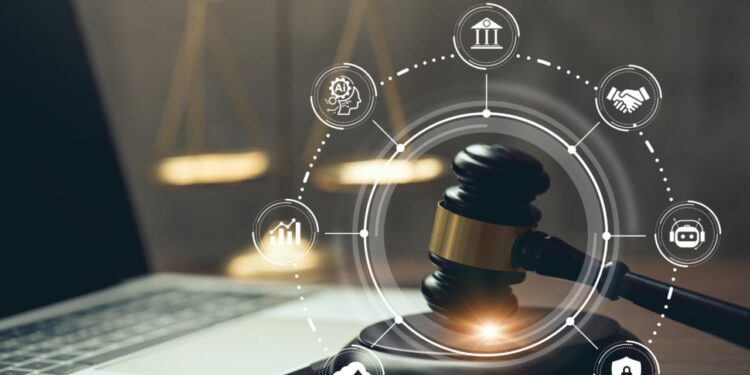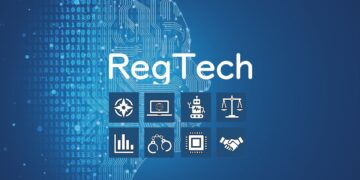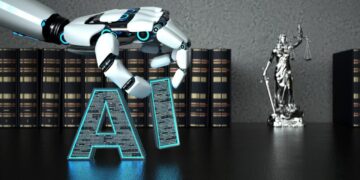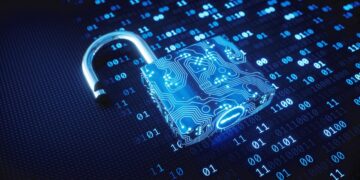The legal profession, often seen as a bastion of tradition, is undergoing a profound digital transformation. The courtroom, once a physical space defined by paper documents and in-person testimony, is rapidly evolving into a dynamic, data-driven environment. Litigation’s Future Is Digital is no longer a prediction; it’s a present reality. This article provides a comprehensive exploration of the technologies, legal principles, and strategic shifts that are defining this new era of digital jurisprudence. We will delve into how artificial intelligence, advanced data analytics, and blockchain are reshaping legal practice, from discovery and evidence presentation to case management and dispute resolution. This deep dive will offer a roadmap for how legal professionals can navigate this new landscape, ensuring they are not just adapting to change but are leading the way in building a more efficient, transparent, and equitable legal system.
The New Tools of the Digital Courtroom
The modern legal professional’s toolkit is no longer limited to a pen and a legal pad. It now includes a suite of powerful digital technologies that are streamlining every phase of the litigation process. These tools are not just about convenience; they are about a fundamental change in how a case is built and presented.
A. E-Discovery and Data Analytics: Electronic discovery, or e-discovery, is the process of identifying, collecting, and producing electronically stored information (ESI) in response to a request for production.
- The Data Deluge: The sheer volume of digital data—from emails and text messages to social media posts and cloud storage—has made manual discovery an impossible task. This has led to the rise of advanced e-discovery platforms that use AI and machine learning to analyze millions of documents in a fraction of the time.
- Predictive Coding: A key technology in e-discovery is “predictive coding,” where a human lawyer trains an AI system to identify relevant documents. The AI then uses this training to review a massive dataset, significantly reducing the cost and time of discovery.
- Data Analytics for Case Strategy: Beyond document review, advanced data analytics are being used to identify key patterns and insights in case data. A lawyer can use these tools to analyze a defendant’s past litigation history, identify key legal arguments, and even predict the likely outcome of a case.
B. AI for Legal Research and Strategy: Artificial intelligence is revolutionizing legal research, a cornerstone of legal practice.
- Natural Language Processing (NLP): AI systems that use NLP can understand and analyze legal text, finding relevant cases and statutes that a human lawyer might miss. These systems can also be used to summarize long legal documents, saving a lawyer hours of time.
- Predictive Analytics for Litigation: AI is also being used for predictive analytics in litigation. These tools can analyze a vast dataset of past court cases and predict the likely outcome of a new case. This gives a lawyer a strategic advantage, helping them to make more informed decisions about whether to settle or go to trial.
- AI for Contract Review: AI software can review legal contracts, identify key clauses, and flag potential risks. This is a game-changer for due diligence and contract management, as it can significantly reduce the cost and time of these processes.
C. Blockchain for Evidence and Trust: Blockchain technology, the decentralized and immutable ledger, is being explored for its potential to create a more transparent and trustworthy legal system.
- Immutable Evidence: A blockchain can be used to create a timestamped, tamper-proof record of evidence. For example, a photo or a video of a crime scene can be “hashed” onto a blockchain, creating a permanent record that proves when and where the evidence was created.
- Smart Contracts for Dispute Resolution: Smart contracts, which are self-executing digital contracts, can be used for automated dispute resolution. For example, a smart contract can hold a payment in escrow and automatically release it to the winner of a dispute, as determined by an arbitrator or a court. This can significantly reduce the cost and time of a legal battle.
- Digital Notarization: Blockchain can also be used for digital notarization, creating a secure and verifiable record of a document’s authenticity.
The New Rules and Legal Challenges
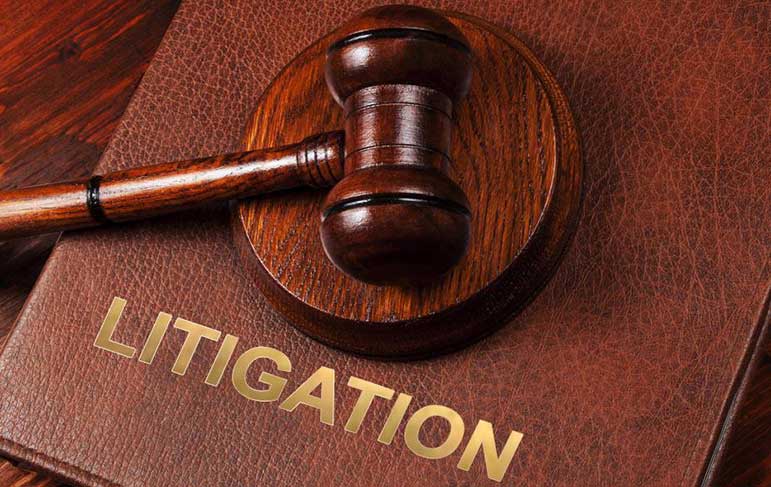
The digital transformation of litigation is not just a matter of new tools; it is a matter of new rules and new legal challenges. The legal system is grappling with how to adapt to a world where evidence is digital, and the courtroom is virtual.
A. The Admissibility of Digital Evidence: The admissibility of digital evidence in court is a major legal challenge.
- Authenticity and Integrity: The legal system must be able to verify the authenticity and integrity of digital evidence. A “chain of custody” must be established to prove that the evidence has not been tampered with. This is a complex task in a world where digital data can be easily altered or deleted.
- The “Black Box” Problem: The use of AI in a legal process, such as in e-discovery, raises the “black box” problem. It can be difficult to explain to a court how an AI system arrived at a certain decision. This lack of transparency can be a barrier to the admissibility of AI-generated evidence.
- Spoliation of Evidence: The intentional destruction of digital evidence, known as “spoliation,” is a major legal risk. The legal system is creating new rules and penalties for the destruction of digital evidence, with the burden on the parties to preserve all relevant ESI.
B. The Rise of Virtual Courtrooms: The COVID-19 pandemic accelerated the adoption of virtual courtrooms, which have created a new set of legal and ethical challenges.
- Access to Justice: Virtual courtrooms can improve access to justice for people who live in rural areas or who have a disability. However, they can also create a digital divide, as not everyone has access to a reliable internet connection or a computer.
- Fairness and Due Process: The use of virtual courtrooms raises questions about fairness and due process. Is a defendant who is appearing via video conference receiving the same level of due process as a defendant who is in person? How can a judge assess a witness’s credibility when they are appearing on a screen?
- Jurisdiction and International Law: Virtual courtrooms are borderless, which raises new and complex legal questions about jurisdiction and international law. A court in one country may not have the jurisdiction to compel a witness in another country to appear via video conference.
C. Legal Ethics in a Digital Age: The use of digital tools and virtual courtrooms is also raising new ethical questions for legal professionals.
- Competence and Technology: The American Bar Association (ABA) has updated its Model Rules of Professional Conduct to require that lawyers have a duty of technological competence. This means that a lawyer must be knowledgeable about the technology that is relevant to their practice.
- Confidentiality and Data Security: A lawyer has an ethical and legal duty to protect the confidentiality of their client’s information. The use of cloud-based storage and other digital tools creates new security risks, and a lawyer must take all necessary steps to protect their client’s data from a cybersecurity breach.
The Strategic Roadmap for the Digital Future
The future of litigation is here, and legal professionals who fail to adapt will be left behind. Here is a strategic roadmap for how to navigate this new landscape.
A. Embrace New Technology: The first step is to embrace the new technologies of the digital courtroom.
- Learn and Train: Lawyers and legal professionals must invest in training to learn how to use advanced e-discovery platforms, AI-powered legal research tools, and other digital technologies.
- Invest in Infrastructure: Law firms and legal departments must invest in the infrastructure that is needed to support these new technologies, including a secure and reliable network, cloud-based data storage, and a robust cybersecurity system.
B. Build a Data-Driven Practice: The future of litigation is a data-driven one.
- Data Analytics: Lawyers should use data analytics to gain a strategic advantage, from identifying key legal arguments to predicting the likely outcome of a case.
- Data Governance: Law firms and legal departments must have a clear data governance strategy to ensure that all data is collected, stored, and managed in compliance with all relevant regulations.
C. Reimagine the Legal Process: The digital transformation of litigation is an opportunity to reimagine the legal process itself.
- Virtual Hearings: Law firms and courts should explore the use of virtual hearings and depositions to reduce the cost and time of a legal battle.
- Smart Contracts: The legal system should explore the use of smart contracts for a more automated and efficient dispute resolution process.
D. The Lawyer’s Evolving Role: The role of the lawyer is shifting from a manual document reviewer to a legal strategist and a technologist.
- Strategic Thinking: The use of AI and other digital tools allows a lawyer to focus on the high-level, strategic thinking that is needed to win a case.
- Technological Competence: A lawyer’s technological competence is no longer just a best practice; it is a legal and ethical requirement.
E. Advocate for Change: Legal professionals have a powerful role to play in shaping the future of digital jurisprudence.
- Advocate for New Laws: Lawyers can advocate for new laws and regulations that address the challenges posed by digital evidence, virtual courtrooms, and AI.
- Education and Public Awareness: The legal profession can play a key role in educating the public on their rights and responsibilities in a digital world.
Conclusion
Litigation’s digital future is a story of a new era of justice, one that is more efficient, more transparent, and more accessible. The challenges are immense, from the legal ambiguity of digital evidence to the ethical questions of AI. However, the opportunity is even greater: to use the power of technology to build a legal system that is more aligned with the values of the modern world. The decisions we make today will not only shape the future of litigation but also determine the kind of justice system we leave for generations to come. The future of law is here, and it is a new era of digital jurisprudence.

